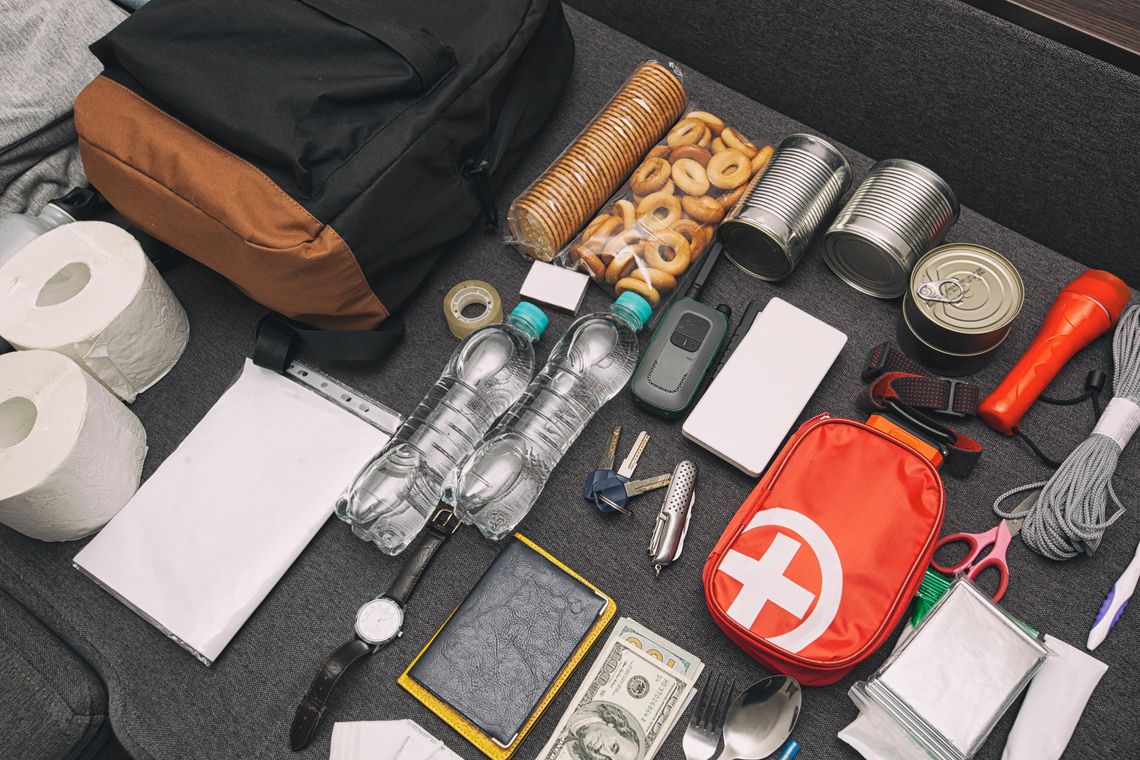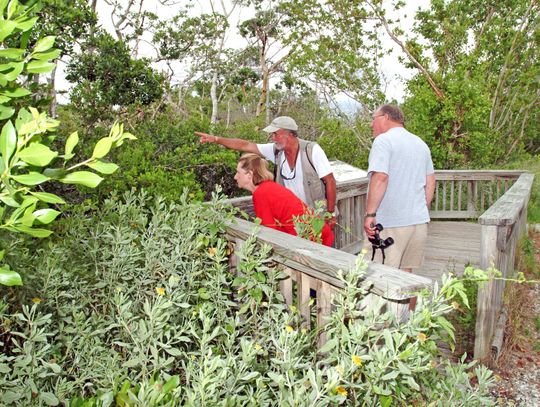For those who love a tropical vibe, there’s no more inviting place in the continental United States than Southwest Florida. We’ve got it all: The sunshine. The beaches. The diversity of palms, plants and wildlife.
It’s like living in paradise.
But paradise sometimes comes at a cost.
In Florida, the tradeoff is from June 1 to November 30 — the official dates of hurricane season (although that’s not written in stone). Hurricanes are notoriously unpredictable, despite the best attempts to track the where of their specific paths or the when of the precise times they’ll make landfall. And no area of the state is immune.
Fortunately, there are many ways to prepare for an oncoming storm. The following checklist will give you the foundational precautions you need to know. This will guide you on what to do from before the start of the season to when a hurricane is predicted to after the storm is over.
Keep this where you can easily find it. The biggest danger is often not the storm itself but failure to prepare and heed evacuation warnings. Be smart and be safe.
BEFORE THE STORM
AS EARLY AS POSSIBLEInsurance preparation
- Examine all insurance policy coverage.
- Add insurance hotline number to your phone and establish online account access.
- Photograph and document all personal belongings.
- Compile master list of emergency contacts and account information.
Maintain a list of important phone numbers including:
- County emergency management office
- Evacuation sites
- Doctors
- Banks
- Schools
- Veterinarian
- Out of town contacts
- Friends and family
Gathering important documents
- Physical documents should be kept in a waterproof container
- Cash (banks and ATMs may not be available after a storm)
- Medical records
- Banking information
- Credit card numbers
- Copies of social security cards
- Copies of birth and/or marriage certificates
- Copy of Will
- Other personal documents
- Set of car, house, and office keys
Lighting and communication
- Flashlights (Do not use candles)
- LED lanterns
- NOAA Weather Radio
- Batteries (varying sizes)
- Cell phone chargers
Clothing and protection
- Rain gear such as jackets, hats, umbrellas and rain boots
- Sturdy shoes or boots and work gloves
Determine your protection strategy
- Identify your safest options for shelter from flooding and high winds.
- Develop both an evacuation plan and a sheltering-in-place plan.
- Keep your motor vehicle tanks filled with gasoline.
- Check motor vehicle tire pressure and fluid levels (oil, coolant).
MAKE SAFETY PLANS
Evacuation planning
- During hurricane season, find out if you live in a place that might need to evacuate. This includes evacuation zones, areas that flood easily, mobile homes, or buildings that aren't safe. Knowing this helps you get ready and understand what to do when local officials give evacuation orders. For more information or to find your zone, check with local Emergency Management or visit www.floridadisaster.org/knowyourzone.
- If officials order evacuation, leave without delay.
- Determine your destination, transportation method, and lodging.
- Arrange transportation assistance in advance if needed or if using public transit.
- Mobile homes, RVs, trailer homes, and manufactured housing are unsafe during high winds — plan to evacuate to a secure location.
Shelter-in-place planning
- Prepare to manage without internet, phone service, gas, water, and electricity for extended periods.
- Practice relocating to your designated wind shelter.
- Identify a small, windowless interior room on the lowest flood-safe floor of a sturdy structure.
- Recognize that flooding occurs rapidly—have a quick evacuation plan ready.
- Build a personal support network of individuals who can help you and whom you can assist.
Communication planning
- Register for free emergency alerts through your local government.
- Establish how you'll track local news and weather updates.
- Obtain a backup battery or charging solution for your cell phone.
- Acquire a battery-operated radio for power outages.
- Learn alert terminology and appropriate responses:
- Familiarize yourself with alert types: Hurricane Watch and Warning, Tropical Storm Watch and Warning, Extreme Wind Warning, Storm Surge Watch and Warning, Flash Flood Watch and Warning, Flood Watch and Warning, Tornado Watch and Warning. In short:
- WATCH: Be prepared!
- WARNING: Take action!
Learn emergency skills
- Complete First Aid and CPR training.
- Prepare for utility disruptions—plan for power needs including medical equipment and cell phones.
- Consult your physician about backup power requirements.
GATHER EMERGENCY SUPPLIES
Food
- Water (1 gallon per person per day)
- Nonperishable packaged or canned food and beverages (at least 10 days)
- Snack foods
- Juices
- Baby food
- Special dietary items
- Non-electric can opener
- Paper plates
- Napkins
- Plastic cups
- Utensils (scissors, bottle opener, corkscrew, knife)
- Charcoal or propane grill
- Grill tools
- Charcoal or full propane tank
Medications and medical supplies
- Stock a one-month minimum supply of medication
- Regularly used medical supplies
- List of allergies
- List of the style, serial number, and manufacturer information of required medical devices
- Information about where you receive medication, the name of the drug and dosage
First Aid Kit
- First aid manual
- Sterile adhesive bandages of different sizes
- Sterile gauze pads
- Hypoallergenic adhesive tape
- Triangular bandages
- Scissors
- Tweezers
- Sewing needle
- Moistened towelettes
- Antiseptic
- Disinfectant wipes
- Hand sanitizer
- Thermometer
- Tube of petroleum jelly
- Safety pins
- Soap
- Latex gloves
- Sunscreen
- Aspirin or other pain reliever
- Anti-diarrheal medicine
- Antacid
- Laxative
- Cotton balls
- Q-tips
Specialty Items
- Specialty items for infants, small children, the elderly, and family members with disabilities
- Battery-powered fans, both desk/floor and handheld
- Books, games, puzzles or other activities for children
- Gasoline or generator (follow storage guidelines in manufacturer's manual)
- Carbon monoxide alarm
- Heavy-duty gloves for handling debris
- Insect bite treatment, and bug spray
- Bleach
- Emergency whistles
- Lighters and/or matches
- Coolers and freezer packs
- Protective gear and battery/gas-powered chainsaw
- Two-way radios and NOAA weather radio
- Portable tool kit (or at least a hammer, screwdriver (flathead and Phillips), adjustable joint wrench, and regular and needle-nose pliers)
- Gallon jugs for storing water to flush commodes
- Sunscreen
- Inflatable mattresses, pillows, blankets
Pet Supplies
- Pet food and water to last at least two weeks
- Proper identification
- Medical records/microchip information
- Carrier or cage
- Muzzle and leash
- Water and food bowls
- Medications
- Stock training pads
- Service animal I.D., veterinary records, and proof of ownership
- Supplies for your service animal
- Make copies of current licenses/vaccines and store in container
- Place animals in crates with rawhide bones and toys during and following the storm
- Restrain pets using a leash or harness when appropriate
- Stock puppy training pads
- Obtain collapsible pet carriers to use in hotels, shelters or for evacuation
Supply Organization
- Assemble food, water and medications (stores and pharmacies may be inaccessible).
- Create a Go-Kit: minimum 3-day portable supply with device chargers and backup batteries of varying sizes (cell phone, CPAP, wheelchair, etc.).
- Create a Stay-at-Home Kit: minimum two-week supply.
- Stock a one-month medication supply in child-resistant containers plus medical supplies/equipment.
- Secure personal, financial, and medical records (hard copies or secure digital backup)
- Prepare a wallet card listing all medications and dosages.
Last-Minute Tasks
- Disable icemaker and clear ice bin.
- Adjust freezer and refrigerator to coldest temperature settings.
- Fill bathtubs with water (for non-drinking purposes).
- Set HVAC to maximum cooling (remember to switch AC off if power fails).
- Charge all electronic devices.
- In a power outage, unplug TV and other electronic devices.
PROTECT YOUR HOME
Wind Protection
- Bring indoors or secure outdoor items that could become dangerous projectiles (lawn furniture, trash cans, etc.).
- Anchor items that must remain outside (propane tanks, gas grills).
- Trim or remove trees within falling distance of your home.
- Install permanent storm shutters or protective sheeting on windows.
Flood Protection
- Clear gutters, downspouts, and drains.
- Stockpile sandbags and plastic sheeting.
- Consider sump pump installation with battery backup.
- Consider elevating your electric panel, water heater, and heating system.
- Review insurance coverage with your agent.
DURING THE STORM
MAKE SMART DECISIONS
If evacuation is ordered
- Leave immediately as directed by local authorities.
- Take your Go-Kit.
- Use designated evacuation routes only—shortcuts may be blocked.
- Locate shelters through local officials or the Red Cross Emergency App.
If sheltering during the storm
- Move to a designated storm shelter or windowless interior room for wind protection.
- Stay away from glass doors and windows.
- Relocate to higher ground before flooding starts.
Flooding safety
- Never walk, swim, or drive through floodwater.
- Remember: Turn Around! Don't Drown!
AFTER THE STORM
USE CAUTION
Stay safe
- Wait for official clearance before returning home.
- Stay away from downed wires, fallen power lines, and damaged poles — they can cause electrocution.
- Avoid touching floodwaters (they contain sewage, chemicals and bacteria).
- Use battery-powered lanterns or flashlights when power is out to prevent fire risk.
- Prevent carbon monoxide poisoning:
- Never use gasoline, charcoal, propane, or natural gas devices indoors, in garages, basements, tents, campers, or near open windows.
- Carbon monoxide is invisible and odorless — but deadly. As an extra precaution, invest in a carbon monoxide detector.
- If you feel weak, dizzy, or sick, immediately move to fresh air.
Stay healthy
- Discard any food that became warm or wet ("When in doubt, throw it out!").
- Consult your doctor or health care provider about refrigerated medications.
- Monitor local health department announcements regarding drinking water safety.
Clean up safely
- Wear protective gear: boots, goggles, and gloves.
- Clean and disinfect all wet items.
- Work with a partner when removing heavy debris.
- Ensure proper training before operating equipment like chainsaws.
- Be aware that heart attacks are a leading post-hurricane cause of death—avoid overexertion.
- Take regular breaks and practice self-care during cleanup.
Take care of yourself
- Recognize that stress, anxiety, and difficult emotions are normal responses.
- Maintain healthy eating and adequate sleep to manage stress.
While no amount of preparation can guarantee anyone’s safety in a storm, the items on this checklist will, at least, increase your chances of survival and recovery should a hurricane hit. It’s all about stacking the deck when you’re up against the uncertainty of nature.
Keep the odds in your favor.























Comment
Comments